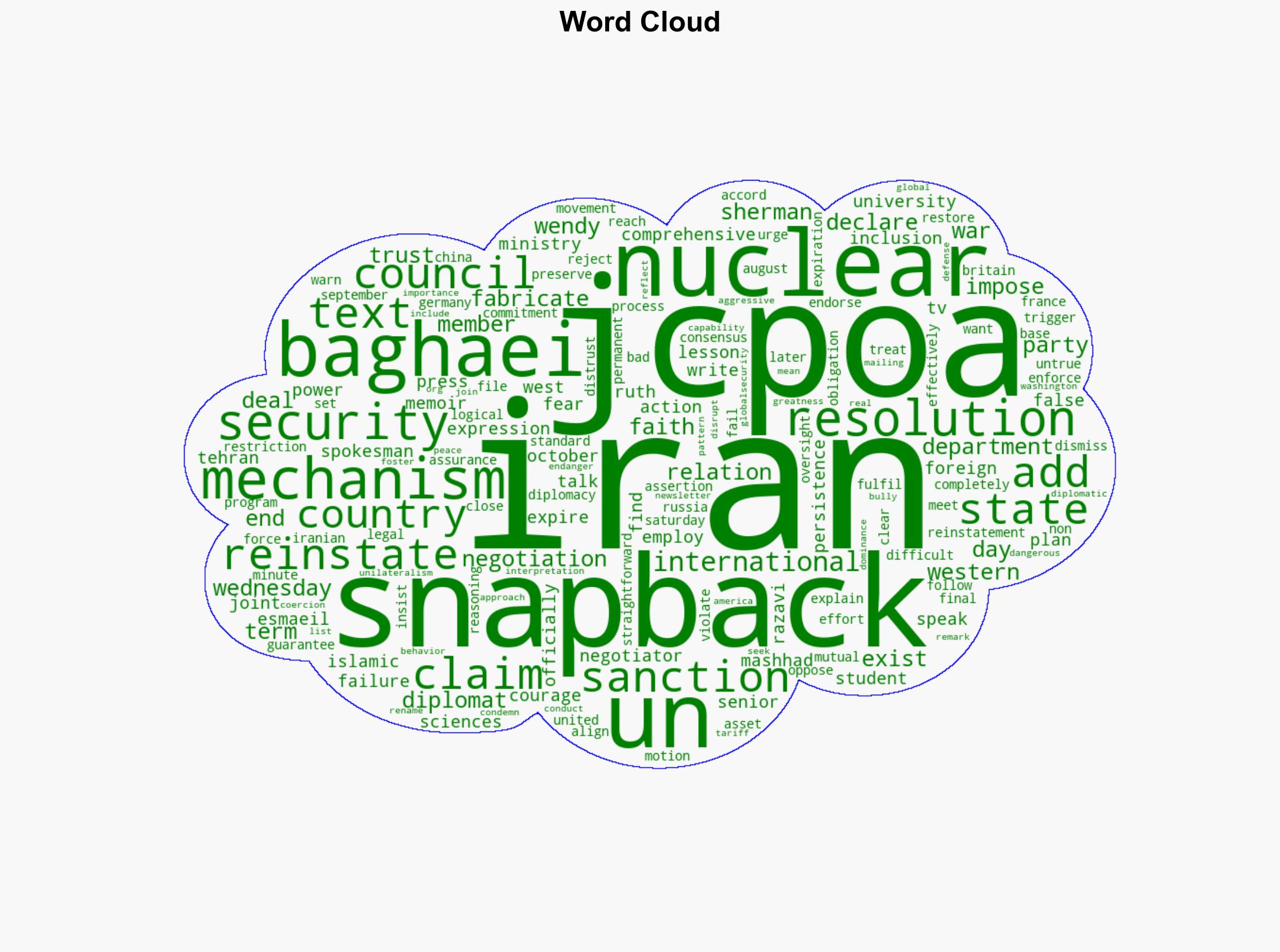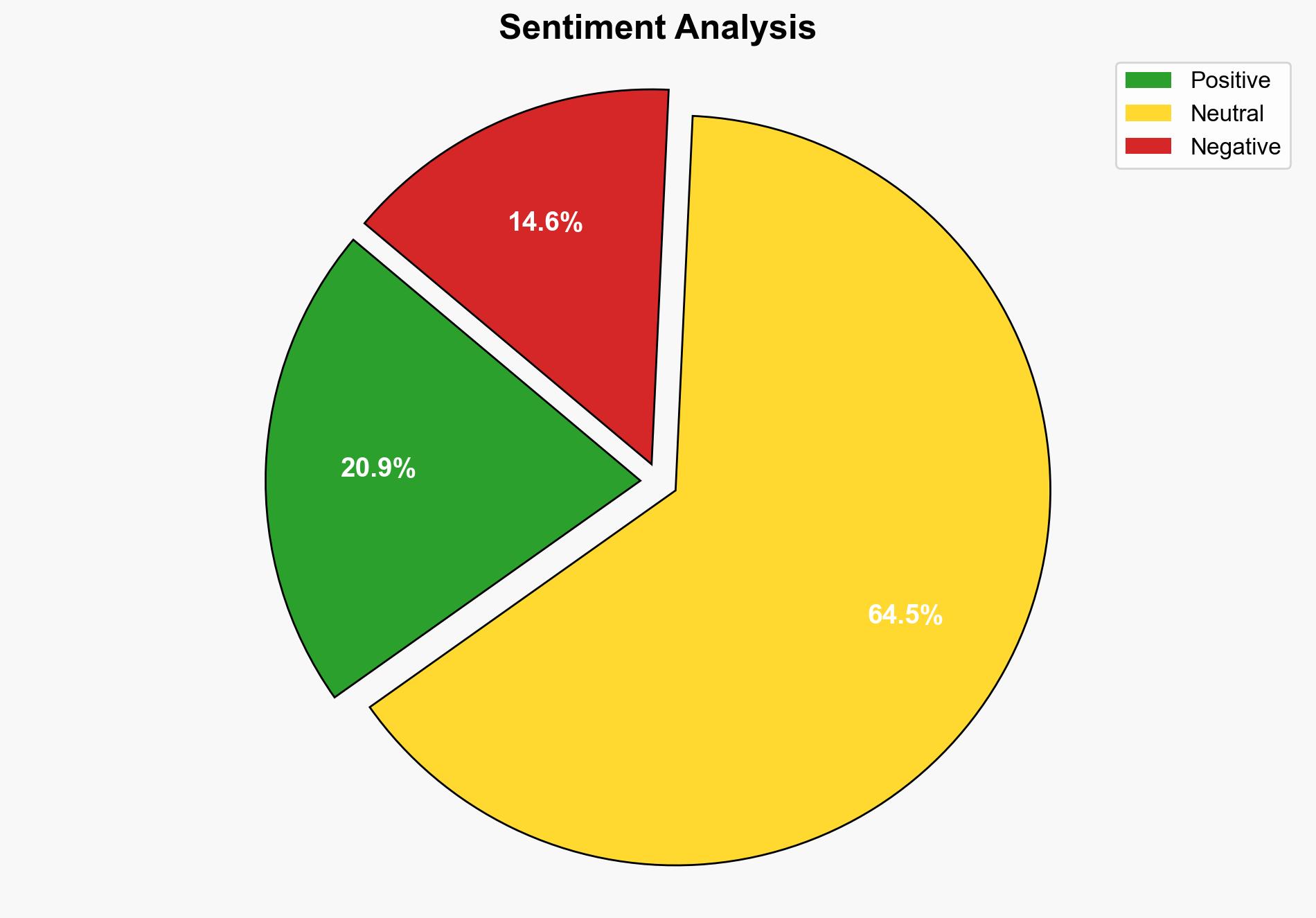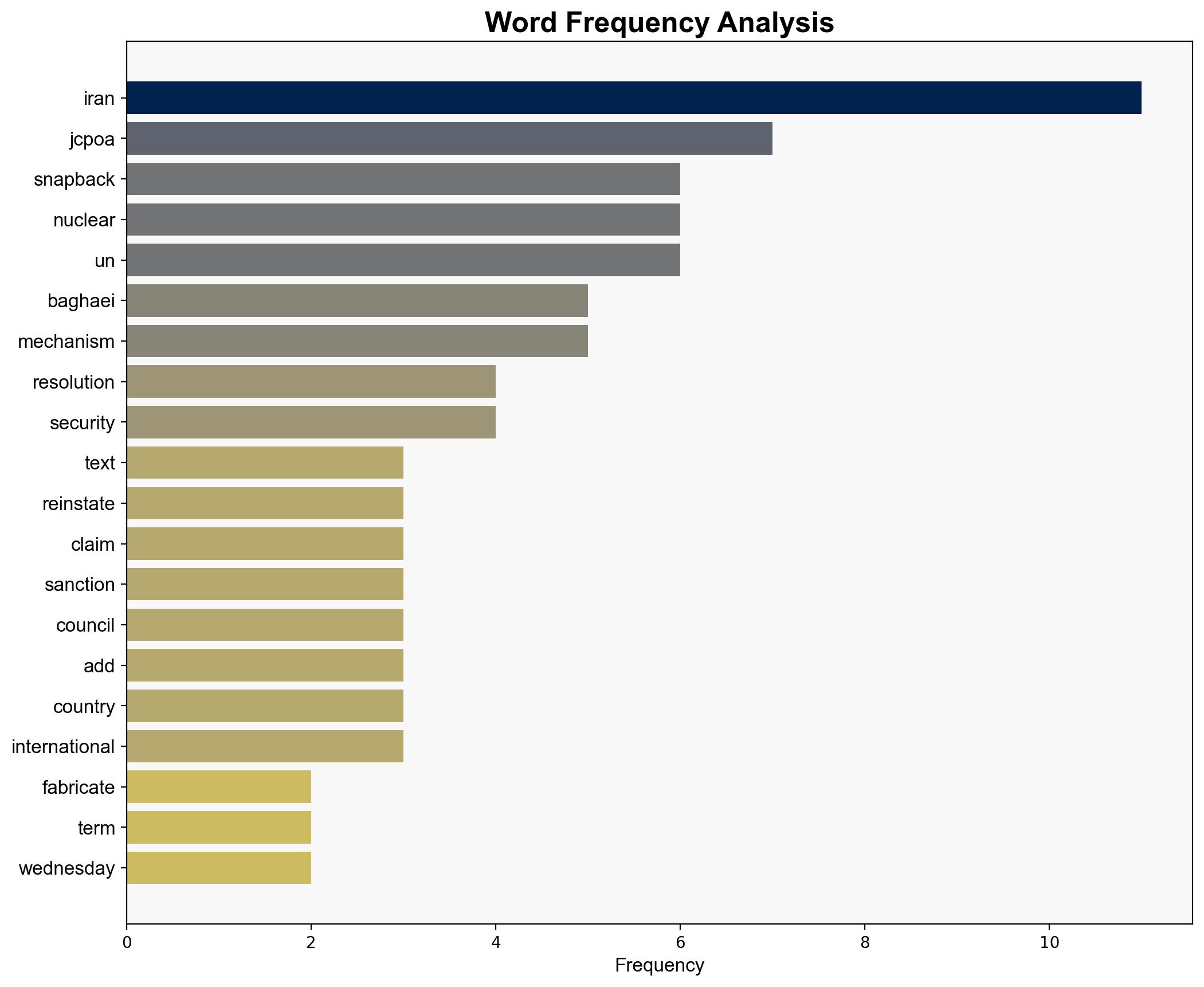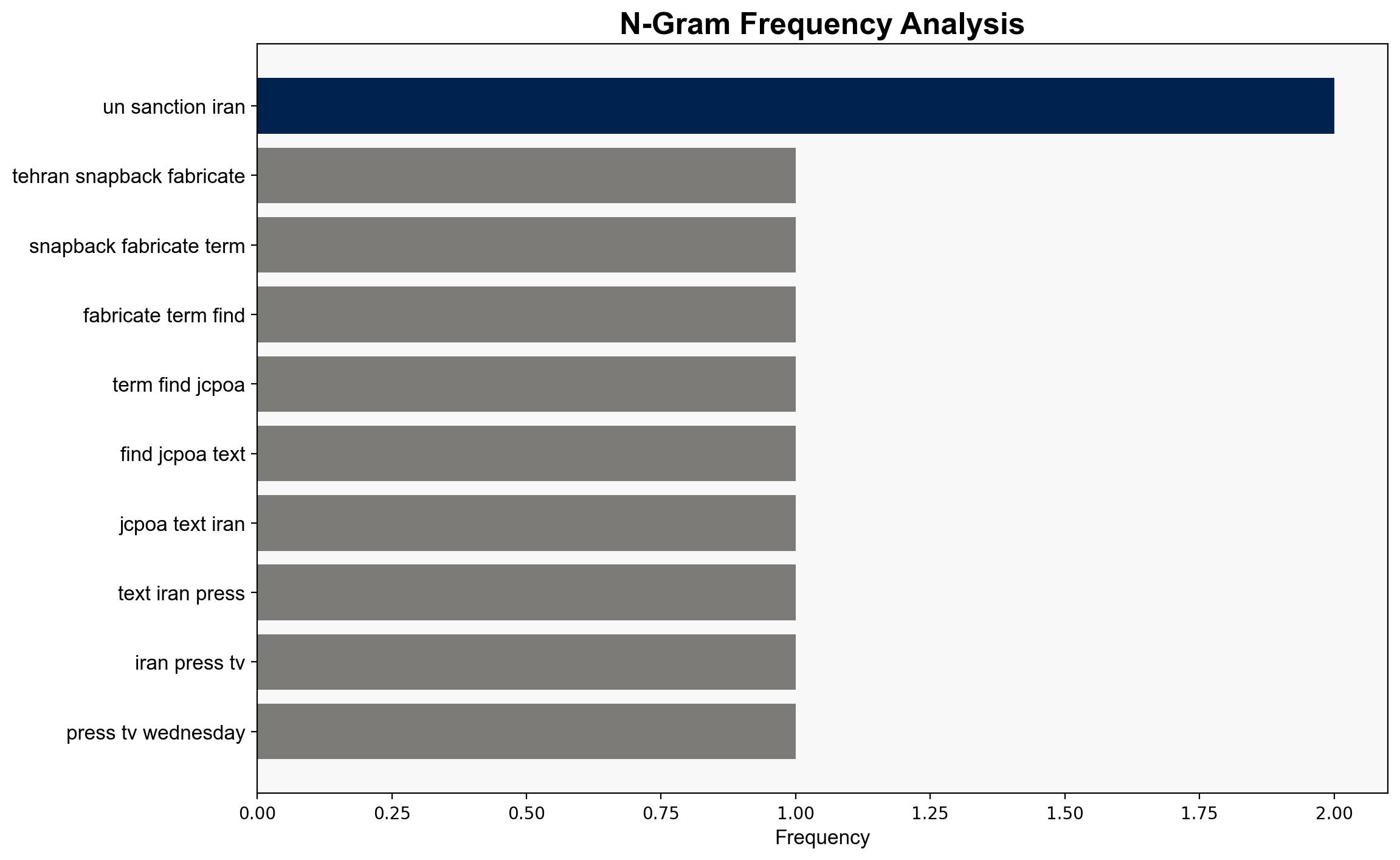Tehran Snapback a ‘fabricated’ term not found in JCPOA text – Globalsecurity.org
Published on: 2025-10-23
Intelligence Report: Tehran Snapback a ‘fabricated’ term not found in JCPOA text – Globalsecurity.org
1. BLUF (Bottom Line Up Front)
The strategic judgment is that the claim of the “snapback” mechanism being a fabricated term is part of a broader narrative by Iran to delegitimize Western actions and maintain its strategic position. The most supported hypothesis is that the term “snapback” is indeed not explicitly mentioned in the JCPOA text, but the mechanism itself is a recognized part of the agreement’s enforcement strategy. Confidence level: Moderate. Recommended action: Engage in diplomatic dialogue to clarify the terms and prevent further escalation.
2. Competing Hypotheses
1. **Hypothesis A**: The “snapback” mechanism is a fabricated term used by Western countries to justify unilateral sanctions on Iran, not supported by the JCPOA text.
– **Supporting Evidence**: Iranian officials, including Esmaeil Baghaei, claim the term does not exist in the JCPOA text and is a Western construct.
2. **Hypothesis B**: The “snapback” mechanism, while not explicitly named in the JCPOA, is a legitimate enforcement tool recognized by all parties involved in the negotiations.
– **Supporting Evidence**: Wendy Sherman, a key negotiator, references the mechanism in her memoirs, and Western countries have acted on this basis.
Using ACH 2.0, Hypothesis B is better supported due to historical references and actions taken by multiple countries, indicating a shared understanding of the mechanism’s existence.
3. Key Assumptions and Red Flags
– **Assumptions**: Hypothesis A assumes that the absence of explicit terminology equates to non-existence, which may overlook implicit agreements. Hypothesis B assumes that all parties have a shared understanding of the JCPOA’s enforcement mechanisms.
– **Red Flags**: The strong denial by Iranian officials could indicate an attempt to shift the narrative. The lack of explicit mention of “snapback” in the JCPOA text is a critical gap.
– **Cognitive Bias**: Confirmation bias may affect both sides, with each interpreting the JCPOA text to support their narrative.
4. Implications and Strategic Risks
– **Geopolitical Risks**: Continued disagreement over the “snapback” mechanism could lead to increased tensions between Iran and Western countries, potentially impacting regional stability.
– **Economic Risks**: Reinstated sanctions could further strain Iran’s economy, leading to domestic unrest and increased anti-Western sentiment.
– **Diplomatic Risks**: Failure to resolve the disagreement diplomatically could undermine future negotiations and international trust in multilateral agreements.
5. Recommendations and Outlook
- Engage in multilateral diplomatic discussions to clarify the terms and mechanisms of the JCPOA, focusing on shared interpretations and commitments.
- Scenario-based Projections:
- **Best Case**: Diplomatic resolution and mutual understanding lead to renewed negotiations and easing of tensions.
- **Worst Case**: Escalation of sanctions and retaliatory measures by Iran, leading to regional instability.
- **Most Likely**: Continued diplomatic stalemate with periodic escalations in rhetoric and sanctions.
6. Key Individuals and Entities
– Esmaeil Baghaei
– Wendy Sherman
7. Thematic Tags
national security threats, geopolitical tensions, international diplomacy, sanctions





